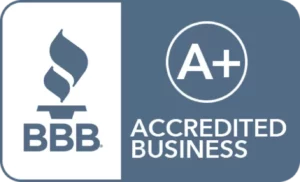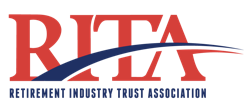Unbeknownst to many retirement account holders, payment of individual retirement account (“IRA”) custodian/trustee fees may be generally tax-deductible. Under Internal Revenue Service (“IRS”) rules, in place of the standard deduction, one can deduct certain expenses as miscellaneous itemized deductions on Schedule A (Form 1040 or Form 1040NR). One can only claim the amount of expenses that is more than 2% of their adjusted gross income. For example, Amy, a single taxpayer, has an adjusted gross income of $50,000. She may deduct her miscellaneous itemized deductions only to the extent that they exceed 2% of $50,000, or $1,000. Some of the more popular itemized deductions are for: gifts to charity, home mortgage interest, tax preparation fees, and medical and dental expenses. Therefore, if one is using Schedule A to itemize deductions in place of taking the standard deduction, Self-Directed IRA fees could be deducted taking into account the 2% threshold.
There are currently approximately 49 million IRAs. The majority of all IRA accounts are subject to small annual administration fees, which generally cover basic paperwork and maintenance of the account. These annual IRA management fees may be tax deductible, subject to the itemized deduction rules and so long as the fees are separately billed and paid for using IRA funds. In other words, IRA management fees paid by personal cash or check that are not deducted from the IRA may be deducted as investment expenses, subject to the itemized deduction limits. Self-Directed IRA Custodian Fees are also not considered part of the total IRA contribution for the year. On the other hand, IRS rules further provide that if IRA administrative/management expenses are paid directly from the IRA such payment will not be considered a distribution from the IRA. For example, if one contributes the maximum for a person under age 50 ($6500 as of 2023), and the trustee deducts $200 from the account for advisory or custodian fees, the fee paid would not be considered a distribution as well as one cannot increase their IRA contribution to compensate for that amount.
Therefore a retirement account owner has a choice to pay Self-Directed IRA Fees, both management and custodian, with the money in a retirement account – which is subtracted directly from the account without tax consequences – or to pay the fee with outside/personal dollars instead, and claim the itemized deduction.
The same predicament falls on a retirement account holder subject to investment management Self-Directed IRA Fees associated with the retirement account. The IRS in a private letter ruling (PLR 201104061) affirmed that “wrap fee”-style arrangements like ongoing asset under management and investment advisory fees can be paid with outside taxable dollars and still deducted as a Section 212 expenses, subject to the itemized deduction limits. The determination of whether the Self-Directed IRA Fees is deductible is dependent on how it is billed. For example, if the money simply comes out of any cash balance in in the IRA, then one cannot deduct it. Instead, for tax purposes the fee is offset against earnings in the account when one begins withdrawing the retirement account funds. But if the RA administrator/ trustee bills or invoices the individual separately and allows he/she to pay from another source, then the fee may be deductible for the year in which it was paid, subject to the itemized deduction rules. However, because of the “prohibited transaction” rules under IRC Section 4975, which holds that when a retirement account conducts a transaction between an account and a “disqualified person” (which includes the account owner and his/her lineal descendants), the transaction can be subject to tax and severe penalties, it is critical that no personal expenses are paid using retirement funds or vice versa.
Given that IRA custodian and related investment advisory fees can be paid from retirement accounts – as long as the fee is attributable only to the retirement account – the question remains whether one should pay from retirement accounts when it is possible to do so or via personal funds.
The answer is generally dependent on a variety of factors, specifically, on whether or how much of the Self-Directed IRA Fees would have been deductible if it was simply paid with outside/personal dollars instead based off the itemized deduction rules. After all, the primary benefit to paying the IRA custodian/management fee from a retirement account is the ability to pay it with pretax dollars – since by definition the retirement account is pretax. However, if the fee would have been fully deductible if paid with personal/outside dollars taking into account the itemized deduction rules, then it’s best to simply pay with outside dollars, and allow the IRA to maximize its ongoing tax-deferred growth. Although, in reality, IRA custodian/management fees are often not fully deductible due to the 2%-of-income threshold.
AGI floor on miscellaneous itemized deductions and due to the reach of the alternative minimum tax (“AMT”). In any event, it will generally always be preferable to use personal funds to pay the IRA custodian/investment management fee for a Roth IRA, even if the fee is not deductible, as the belief is that it is always better to pay with after-tax dollars from a taxable account than using future-tax-free-growth dollars from the Roth IRA itself.
The ability to deduct Self-Directed IRA fees can be a nice tax benefit to many IRA account holders itemizing their tax deductions. Nevertheless, IRA holders should consult with a tax professional in order to better help navigate the rules and maximize any potential tax benefits.











